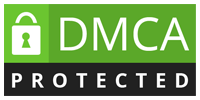One of the most challenging types of virus in this current time is an ‘Encryption Virus’. It operates by getting inside your computer system and when activated, will immediately encrypt several or all of your confidential, important data files, and documents.
If a file gets encrypted the user will no longer have control over the access and for you to access it, you will be needing a key. The problem with this is that it can potentially spread to other computers through the network and lock all your files.
What will be left for you is a compromised computer or device with files that can’t be accessed. The worst is when you receive a random message and you need to pay the illegal hackers to have the access back.
In this article, we will be sharing with you one of the cybersecurity threats that challenge every company and organization today. The encryption virus, how it works, and everything we need to know.
Ransomware
Ransomware is the best example where encryption virus is greatly used. It is a form of malicious software that illegal hackers use to block users from their personal or company data.
After encrypting the files they will add extensions and hold them as a hostage until such demands have been met.
There are different ways in how ransomware can penetrate a system. The most popular one is through file download from an unsecured website or email.
Once downloaded it activates the ransomware program and attacks your system. Some attacks may come in the form of social engineering or through a network chat, message, or even through external devices.
How to deal with Encryption Virus
Companies that have been a target of an encryption virus attack or Ransomware can do two things.
The first is to pay the demand and hope those illegal hackers will hold the end of the bargain and decrypt your files without harming them. Or two, the company can try to execute a recovery protocol by deleting the infected files and restoring data from your backup.
Mitigating Encryption Virus
The first step is to manage your accounts. Do not use your administrator account when working or browsing through the internet. Instead, create a designated or separate account for work and browsing. You should also set up a limit on the system privilege on each account.
The second is to be conscious of every file attachment that you open. Email phishing is a common way that hackers use to penetrate your computer.
Always remember that it is very unusual that companies will send you documents without your request. If you receive a suspicious email or web link, you shouldn’t open the file and delete it immediately. It may contain malware.
Third, invest in a proper cybersecurity system. The key to solving the problem of encryption virus is detecting it before it can get past your network system.
This should be followed through by a routine backup of your files in an external or separate device. Should the need to do a delete and recovery, you already have your stored files.
Lastly, to ensure that encryption virus or ransomware is out of your system. You must delete all files in your storage. The most secure way of doing this is by reset through factory settings or formatting.
Career Opportunity
While encryption viruses normally work with ransomware and several other malware and viruses, you should be aware of its devastating effects and how to prevent them using cybersecurity.
Learn from RCyberSolutions, one of the best cybersecurity tools that offer online educational courses and certifications at a professional or career level. Visit our website now.








